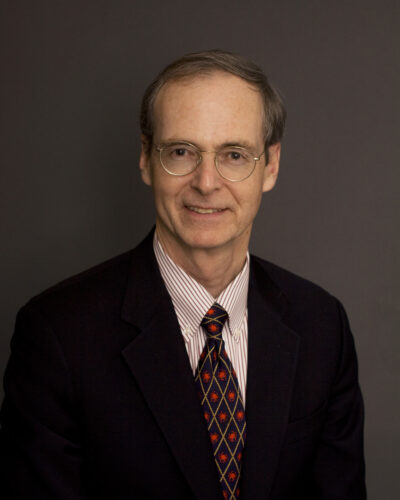From curating exhibits at the Smithsonian to teaching judges about the facts of climate change, Paul Hanle (PhD ’75) has spent decades helping the public appreciate the importance of science.
Hanle came to Yale in 1969 with the intention of earning his PhD in physics but changed directions soon after. “I was interested in both physics and how physicists think, where their ideas come from, and how the circumstances in which they work enable science to develop,” Hanle said. He focused his studies on the History of Science & Medicine and was awarded his PhD in 1975.
After his fourth year of studies, Hanle won a fellowship at the Smithsonian Institution. He was appointed as a curator at the soon-to-open National Air and Space Museum in 1974. One of his proudest accomplishments was overseeing the creation of the Air and Space Smithsonian magazine. “It was extremely exciting and gratifying to create something brand new,” Hanle said.
Hanle had been bitten by the museum bug. He went on to lead two museums—the Maryland Science Center and the Academy of Natural Sciences of Philadelphia. As CEO of the Maryland Science Center, Hanle pursued new, creative routes of communicating scientific knowledge. For example, he helped lead the Museum Film Network, which produced the IMAX film To the Limit—a film exploring human physiology through athletics. “It was a very powerful strategy for conveying scientific information,” Hanle said. “The audience didn’t necessarily know they were learning science.” As president of the Academy, Hanle opened an exhibit on dinosaurs that brought museum visitation to record highs. Hanle’s ingenuity in his leadership at these museums created meaningful opportunities for the general public to engage with scientific thought.
Hanle went on to become the first president of the Biotechnology Institute, an organization centered around getting kids excited about modern bioscience. Each year, the organization grants BioGENEius awards to students who completed outstanding science projects, honoring them at an annual convention attended by thousands of representatives from biotechnology companies.
While working at the Biotechnology Institute, Hanle advised President Barack Obama’s 2009 Educate to Innovate initiative, a bipartisan effort to advance the level of STEM education available to kids across the country. “It was successful in helping to raise the profile of the issue and getting companies to realize that they had a stake in STEM education,” Hanle said.
In 2011, Hanle shifted his work towards educating the public about climate change. “In my view, it’s the greatest challenge to humanity and the planet,” Hanle said. “It is truly existential.”
He became CEO of Climate Central, an organization focused on communicating the scientific facts of climate change to the public. One of their major projects involved getting local meteorologists to incorporate information about the impact of climate change on weather into their daily newscasts. “There’s a maxim in communication about climate change—to convey simple messages, repeated often, by trusted messengers,” Hanle said. “Those three elements are a very important way to reach people who might otherwise not be reached.”
Climate Central’s impact is widespread; figures generated by the organization illustrating what rising sea levels would look like at iconic places like the Gate of India and the White House were used at the United Nations’ Climate Change Conference in 2015 to emphasize to delegates the dangers of rising temperatures.
In 2018, Hanle embarked on his latest effort: founding the Climate Judiciary Project at the Environmental Law Institute. The project’s mission is to educate judges about climate science and its connection to environmental law. “I realized that a lot of interesting things were happening in legal cases around trying to hold emitters or producers accountable for the effects of climate change,” Hanle said. “It seemed to me that one of the crucial things we could do is to educate these decision makers, the judges, about the objective, scientifically valid facts of climate change.” The program has received strong interest from judges, and project leaders are currently planning to expand it internationally.
Hanle’s advice for getting people to care about climate change is simple: stick to the science. “If you can convey the scientific facts objectively, you might reach a broader audience,” Hanle said. “That audience may include people who are not necessarily sympathetic to social movements for climate action or are even skeptics, but who might be convinced that there’s a really serious problem about climate change that needs to be addressed now.” Hanle’s work exemplifies how scientific communication and education can be used to create positive change.

